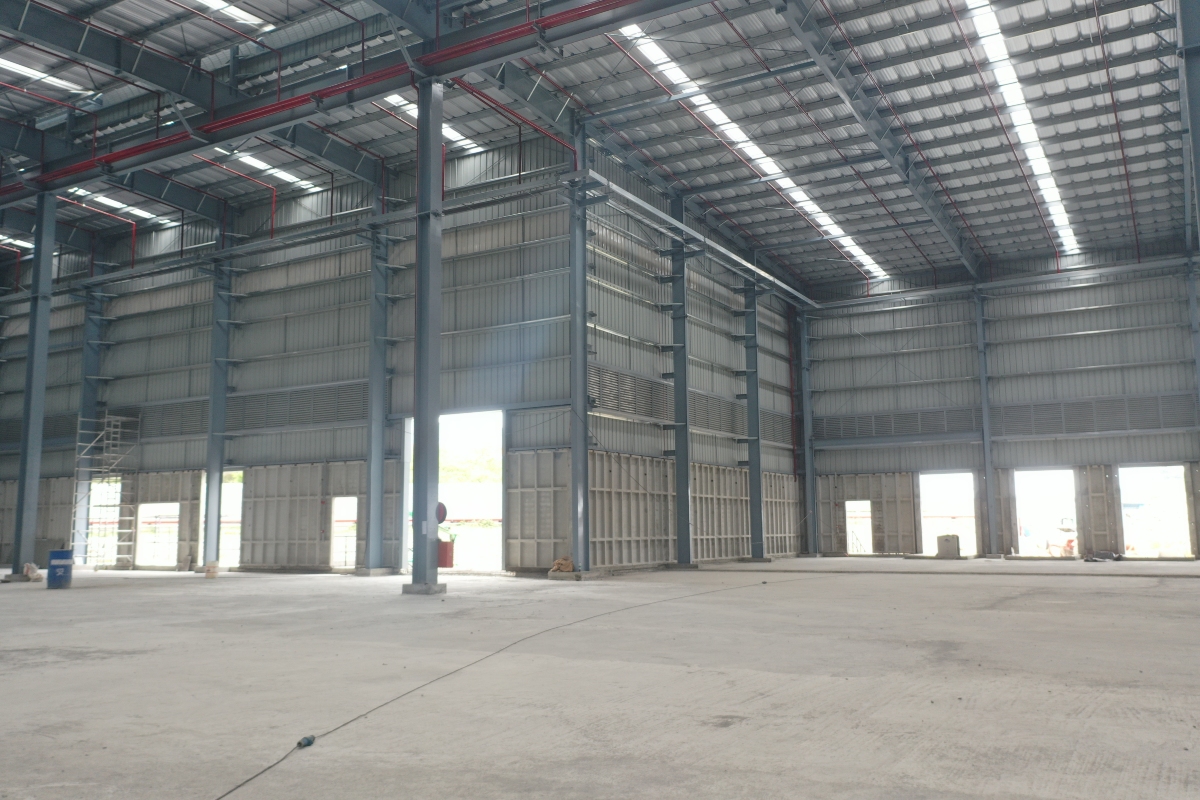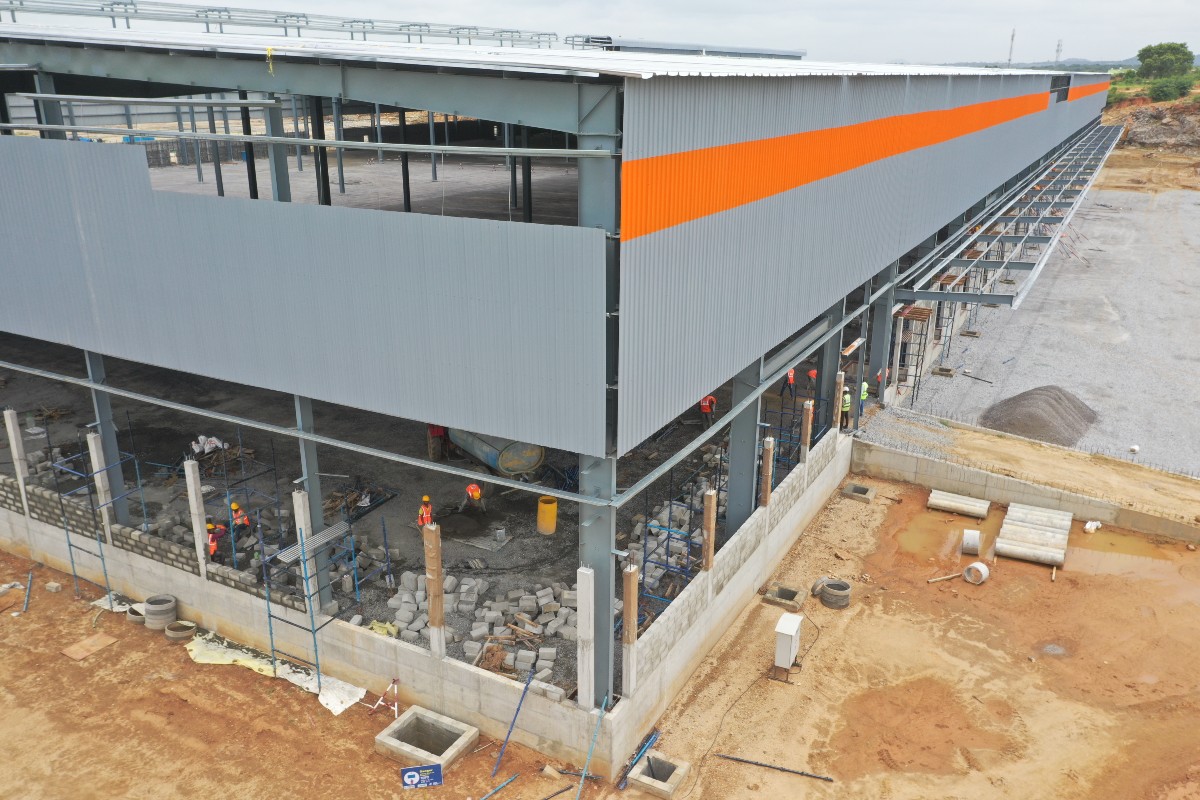In your experience, how integral has the usage of steel been in the evolution of industrial park construction and development?
Steel has played a pivotal role in the evolution of industrial park construction and development, contributing significantly to the structural stability, durability, and longevity of industrial structures. With more than half of our investments allocated to various forms of steel, including structural steel, reinforcement steel, and pipes, it underscores its importance in our development strategy.
The advantages of steel in industrial construction are manifold. Firstly, steel enables faster construction, a crucial factor in meeting project timelines and accelerating the pace of development. In our warehouses, which boast clear grid spans at 16 x 24 m, steel facilitates the creation of large spans necessary for increased storage capacity and layout flexibility. While pre-cast construction offers a viable alternative, the associated costs often outweigh the benefits, making steel a more economical choice.
Moreover, steel structures adhere to globally accepted standards, ensuring consistency and quality across projects. The use of steel also results in a clean finish, enhancing the aesthetic appeal of industrial structures.

What are your thoughts on the current trends in the application of steel within industrial park infrastructure?
As a responsible company with a strong focus on environmental, social, and governance (ESG) principles, Horizon actively monitors the latest trends in the application of steel within industrial park infrastructure. Innovations like green steel are particularly exciting for us, as they align with our commitment to sustainability and environmental stewardship. We are keen to explore how these innovations can be integrated into our projects to minimise our carbon footprint and promote eco-friendly practices.
According to the World Steel Association, the demand for infrastructural and engineering steel is projected to witness a significant spike of 6.7 per cent, reaching 120 million tonnes post 2023. This underscores the importance of staying abreast of market trends and advancements in steel technology to ensure our projects remain at the forefront of industry standards.
Nationally, addressing the environmental impact of steel production is paramount in India’s journey towards achieving net-zero emissions by 2070. While alternatives to steel exist, these materials often present their own comparable environmental challenges giving them no advantage over steel, making steel a preferred material for industrial infrastructure. However, there is a pressing need to improve the energy efficiency of existing steel plants and implement technological innovations to mitigate its emissions.
Technological fixes such as electrifying arc furnaces, capturing and storing carbon emissions through carbon capture and storage (CCS) systems, and reducing emissions by 75-90 per cent by replacing coal with synthetic fuels like hydrogen are key strategies for enhancing the sustainability of steel production. These advancements will drive the industry to minimise its environmental impact and become a cleaner sector.
With the trend toward vertical and multi-level warehousing to maximise space utilisation, what challenges and opportunities do you foresee in implementing such structures?
Firstly, the trend towards vertical and multi-level warehouses aims to maximise space utilisation, presenting design and cost challenges. Constructing such warehouses requires addressing the complexities of composite structures to ensure both efficiency and safety. Additionally, fire-resistance is a crucial consideration, necessitating innovative solutions for structural integrity while meeting safety standards.
Furthermore, the reliance on steel structures in the warehousing industry poses challenges in sourcing, quality, and innovation. Global scenarios affecting steel deliverables emphasise the need for self-sustainability to mitigate delays. Ensuring predictability in steel delivery is paramount for project timelines and commitments.
Only by addressing these challenges, the industry can capitalise on the opportunities presented by multi-level warehousing to enhance space efficiency and meet evolving market demands effectively.

What specific technological advancements or practices do you believe will revolutionise warehousing and industrial park development?
When considering the future of warehousing and industrial park development, technological advancements and innovative practices hold the key to revolutionising the industry. From a steel perspective, by adopting higher grades of steel, using larger section sizes, applying pre-treated coatings, and adapting composite design, there are opportunities to improve the structural performance and durability of buildings in this sector. Moreover, advancements in fabrication processes that can reduce construction time offer potential for increased efficiency in project delivery.

What recommendations or suggestions would you offer to stakeholders in the industry to enhance the utilisation, sustainability, or efficiency of steel in warehousing and industrial park infrastructure?
To enhance the utilisation, sustainability, and efficiency of steel in construction projects, stakeholders including Horizon Industrial Parks implement several key strategies.
First, have a standardised set of details, drawings, and connections that can be easily reusable at scale. This approach streamlines the construction process, reduces design time, and minimises wastage, ultimately saving resources. Additionally, stakeholders should consider incorporating composite structures, which combine different materials to optimise strength, durability, and cost-effectiveness.
By integrating innovative technologies into design, fabrication, and construction methodologies, such as leveraging advanced software for modelling and simulation and automation in manufacturing processes, stakeholders can further improve efficiency, reduce margin of error, and enhance precision.
Furthermore, utilising newer materials like high-strength or high-grade steel can enhance structural performance and longevity. Standard or ready-made hot-rolled sections can also be used to streamline cost and time in construction projects.
Finally, stakeholders should explore methods to minimise their carbon footprints associated with steel production and construction processes, potentially through the adoption of sustainable practices like using recycled steel or implementing energy-efficient manufacturing techniques.





